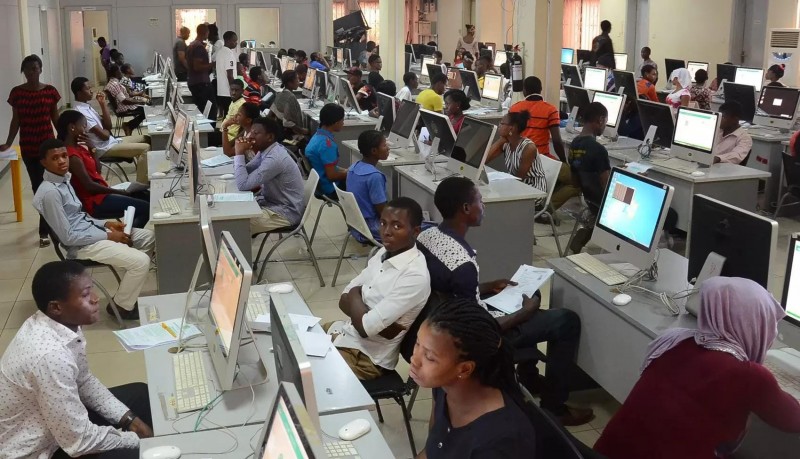Midwives a rising resource for Mesa County births | Health and Wellness | gjsentinel.com
Across the nation, a growing number of expectant mothers are opting for an alternative approach to birth: midwifery.
According to a 2023 report from the U.S. Government Accountability Office, the number of midwife-attended births increased by over 50,000 between 2016 and 2021, accounting for more than 430,000 (about 12%) of births nationwide.
Midwives most commonly operate in hospitals or affiliated clinics, but midwife-facilitated births have also spiked in out-of-hospital settings, like the home and independent “birthing centers.”

Larry Robinson/The Daily Sentinel
One of the patient rooms inside Community Hospital’s labor and delivery ward, The Birth Place, is seen on March 5. Despite improvements to increase patient comfort in hospital labor and delivery units, there is still a stigma attached to giving birth at a hospital that a freestanding labor and delivery alternative could provide. Bloomin’ Babies was that alternative on the Western Slope, but Intermountain Health announced on Feb. 18 that it was closing the facility because of shrinking demand and ongoing fiscal struggles.
Larry Robinson/The Daily SentinelThe Centers for Disease Control and Prevention reported that home births increased 22% between 2019 and 2020, with an additional 12% growth in the following year. Another study in 2022 found that about one in 50 births either occur at home or in a birthing center.
That pattern is apparent locally, with Mesa County’s two major hospitals establishing midwifery services, an independent birth center in development and at least seven in-home birth providers across western Colorado.
The demand for various midwife services can largely be attributed to the emphasis on patient autonomy.
According to certified nurse midwives Merrilynn Artman and Tiffini Young, midwife care revolves entirely around the patient’s preferences and comfort with a spectrum of methods that can be used to support and sometimes facilitate a safe labor and birth.
“There’s a misconception that because you’re having your baby at the hospital, you are going to have intervention, and that is definitely not the case,” Young said. “Part of midwifery care is shared decision making, so we make decisions with our patients about what’s kind of right for them and their family.”

Courtesy of Intermountain Health
Certified nurse midwife Merrilynn Artman, a member of Intermountain Health St. Mary’s Hospital’s Patterson OB-GYN & Midwifery Clinic (610 25 Road) poses in one of the hospital’s delivery rooms. “I don’t think that hospitals have started to hire certified midwives yet,” Artman said. “But, I think it’s a really good approach to having more midwives supporting OB care around the country. There are not a lot of states that have certified midwives, but we are one of them.”
Courtesy of Intermountain Health“Women can choose epidural anesthesia, IV medication or nitrous oxide gas,” Artman added. “There’s a misconception for some people that if they want midwifery care, it means that they don’t have that option. (We’re) educating people that you’ll be supported in whatever you want your labor to look like — it’s completely up to you.”
Certified professional midwife and Tender Gifts founder and owner Althea Hrdlichka said that continuous patient education and a well-developed relationship with clients are likely additional contributors to the success midwives see.
According to certified professional midwife and Modern Village Wisdom (a home-birth service) Director Anna Gilmore, patient education depends on the stage of pregnancy.
At the start, Gilmore said they discuss nutrition, the state of a patient’s vitals and how they can best prepare in advance, primarily with holistic solutions. After the birth, there is a heavy emphasis on postpartum care.
“I’m really coaching women on powerful nutrition and radical responsibility for their health and their family’s health from the very beginning,” Gilmore said.
“With my clients, they’re like daughters in a way,” she added. “They’re coming to me for wisdom about what to do in their pregnancy, and I’ve learned that is probably one of the best parts about midwifery training for me: it helped me be a better parent because of the strong teaching of informed decision making and informed consent, really giving people the space to make a decision.”
Beyond those core components, midwifery can look different depending on the setting and provider you choose.
Midwives can be found in many corners of Mesa County, including Community Hospital, Intermountain Health St. Mary’s Regional Hospital, and even a patients own home. Both hospitals staff their clinics with certified nurse midwives, who are registered nurses with an accredited graduate-level degree in midwifery, who have passed a national examination and are certified by the American Midwifery Certification Board (AMCB).
Certified midwives have completed a graduate-level midwifery program, passed a national examination and received the same AMCB certification, but they are not registered nurses. Last year, Colorado’s Legislature voted to allow them to practice in hospitals.
Similarly, certified professional midwives are not registered nurses, but they have to complete an “accredited educational program in midwifery” and receive certification from the North American Registry of Midwives.
Certified nurse midwives and certified midwives largely practice in hospital settings, whereas certified professional midwives are limited to independent birth centers and at-home births.

Larry Robinson/The Daily Sentinel
Ami Hanson, director of Community Hospital’s labor and delivery ward, The Birth Place, wheels a baby crib into a patient room on March 5. The Birth Place is one of two labor and delivery units in Grand Junction, but the announced closure of Bloomin’ Babies brought some concern for those maternity patients who don’t want to give birth in a hospital.
Larry Robinson/The Daily Sentinel“I don’t think that hospitals have started to hire certified midwives yet,” Artman said. “But, I think it’s a really good approach to having more midwives supporting OB care around the country. There are not a lot of states that have certified midwives, but we are one of them.”
The hospital and at-home environments are self-explanatory, with hospitals having the added benefit of quick access to physicians and critical care in the case of an emergency. At-home settings are often selected because it adds to the patient’s comfort and the odds of intervention are lower.
Birth centers are unique in how they serve as a middle-ground: they are typically located near a hospital, in case of an emergency, but they are only staffed with midwives and maintain a focus on minimal intervention.
The Grand Valley’s only freestanding birthing center, Bloomin’ Babies, closed in late March. However, a birthing center in Fort Collins, Tender Gifts, recently announced its plans to expand with a new location in Grand
Junction. According to Hrdlichka, Tender Gifts is already offering at-home services, but the opening of its birth center is yet to be determined.
Regardless of the setting, the health outcomes and intervention rates for women assisted by midwives are significant.
According to Young, about half of the births at Community Hospital are successful without pharmaceutical interventions, such as nitrous gas, an epidural or IV medicine.
Last year, St. Mary’s Hospital delivered 1,230 babies, with only 21% requiring a cesarean section surgery. Nationwide, the average C-section rate is over 32%.

Courtesy of Intermountain Health
Certified nurse midwife Merrilynn Artman, a member of Intermountain Health St. Mary’s Hospital’s Patterson OB-GYN & Midwifery Clinic (610 25 Road) poses in one of the hospital’s delivery rooms. Hospitals and hospital-affiliated clinics are one of many settings where an increasing number of midwives are facilitating births.
Courtesy of Intermountain HealthAt-home and freestanding birth centers have some of the lowest intervention rates for low-risk pregnancies.
The safety of at-home births has been a contentious topic over the past few decades, but a 2024 study on over 100,000 births determined that (for low-risk pregnancies) home birth is equally as safe as those in birth centers and therefore, hospitals.
“Deaths happen in hospitals, but no one talks about that. It doesn’t get publicized, and it’s assumed that the best possible things happen that could happen,” Gilmore said. “But when it happens outside the hospital, it’s like, ‘Oh my gosh, we knew it. This is so dangerous.’ But sometimes bad things just happen regardless of setting, especially with births.”
It’s important to note that births under a doctor’s supervision, in a hospital, are not necessarily less safe than they are under a midwife’s care.
In fact, labor and delivery physicians remain the only providers allowed to handle high-risk deliveries, and midwives must transfer their patients in the case of most complications.
At the end of the day, there is not a uniform “best” option; rather, each expectant mother should thoroughly consider their health and consult with providers in different settings to determine what fits them best.











